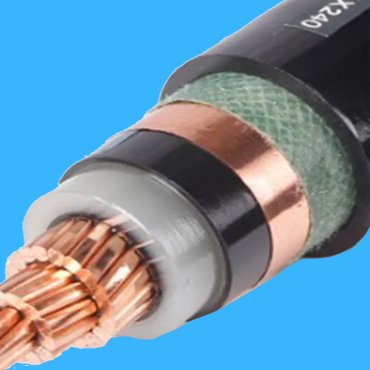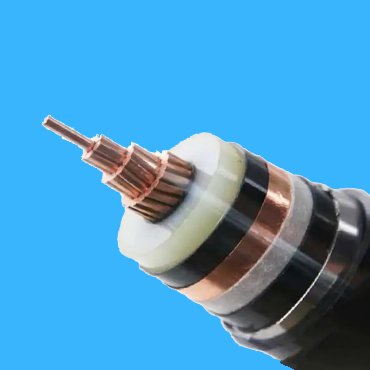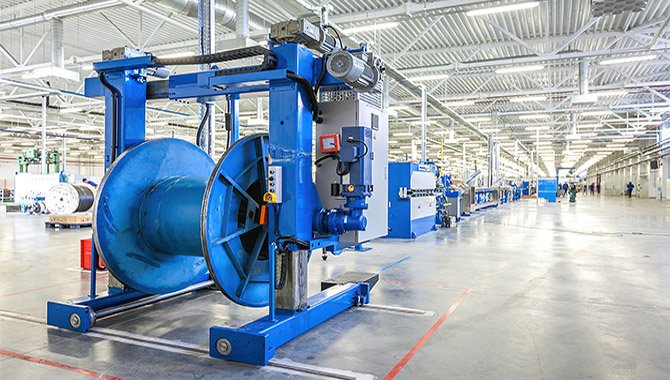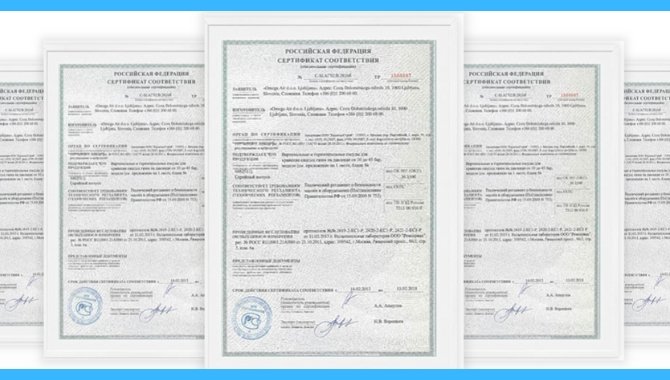Your Reliable Manufacturer of High Voltage Cable in China
What is a High Voltage Cable
High Voltage Cable, usually refers to voltage level ranging from 60 to 500 kV, AL or Copper conductor, XLPE Insulated, Triple extrusion, shielded by copper tape or wire, and sheathed by smooth or corrugated Al or copper tape + HDPE or Lead sheath.
PowerTel & its associated factories have over 35 years manufacturing experience for this high voltage cable, having capacities to provide you a complete range of cables and its straight cable joint and cable terminations for a seamless connection of the cables.
High Voltage Cable by Standard of ICEA & AEIC
Stranded or segment Al or Cu Conductor
Metallic shielded by smooth Cu tape
HDPE Outer sheath with a semi-conducting layer
Conductor size from 750 to 6000 kcmil
Conductor shielded by a non-metallic or semi-conducting layer
Insulated by XLPE

Stranded, Compact or Segment Al or Cu Conductor
Insulation shieled by non-metallic or semi-conducting compound
HDPE Outer sheath with a semi-conducting layer

Conductor size from 750 to 6000 kcmil
Conductor shielded by a non-metallic or semi-conducting layer
Insulated by XLPE

Stranded, Compact or Segment Al or Cu Conductor
Conductor size from 1250 to 6000 kcmil
HDPE Outer sheath with a semi-conducting layer

Conductor shielded by a non-metallic or semi-conducting layer
Insulated by XLPE
Outer sheathed by HDPE
High Voltage Cable by IEC 60840
Product Feature Box




Our Advanced Technology and World-class Production Lines
Our world–class production lines for chemical crosslinking, silane crosslinking, rubber vulcanization, and irradiation crosslinking, combined with our online testing instruments, provide a strong foundation for superior quality control for our high voltage cable.


Advanced Testing Facilities
The use of advanced testing equipment guarantees the quality of our high voltage cable and allows for the successful creation of new type of high voltage cable.
High Voltage Cable Fully Certificated by Third Testing Lab
Our High voltage Cable already Certified by international authoritative institutions such as UL (USA), TUV (Germany), VDE (Germany), CE (EU), ABS (USA), DNV (Norway), BV (France), LR (UK), GL (Germany), NK (Japan), RINA (Italy), KR (Korea), GOST (Russia), SASO (Saudi Arabia), etc.


Custom Design & Fabrication for your High Voltage Cable
This involves designing and manufacturing a tailored high voltage cable to your individual needs, by selecting the appropriate insulation, jacketing and shielding to ensure the cable meets your performance and safety requirements, as well as providing a range of assembly and testing services to ensure the cable performs optimally; by providing full engineering and design services, and offering custom fabrication to meet your precise specifications.
Related Product
Some key Points for Design and Construction of High Voltage Cable
The key to designing high-voltage cable is the planning and preparation of high-voltage cable lines, which is of great significance for a good high-voltage cable line design. you should focus on improving the design of high-voltage cable lines, familiarizing themselves with and understanding the structural design, pollution prevention, and lightning protection design of high-voltage cable line towers, in order to meet the design quality, improve functionality, and practicality of high-voltage cable lines, To lay a solid foundation for stable operation of high-voltage cable lines.
In the actual operation process, a crucial indicator for cable selection is the comprehensive management of cross-sectional area of a high voltage cable. Only by achieving orderly management of cross-sectional area and calculating the maximum current carrying capacity of the cable can it play a more effective role in accidents. However, there are many factors that affect the cable carrying capacity and safe operation in practical applications. Therefore, in the process of cable selection and management, it is very necessary to conduct specific operations and management from various aspects. Only by paying attention and attention to relevant issues at a macro level can significant benefits be achieved in the specific management process of cables, and good management and control can be achieved in terms of the comprehensive coefficient of safety management. If we only achieve an increase in the cross-sectional area of cables from a relatively one-sided perspective without necessary management of other factors, the ultimate result is to focus on one aspect and lose the other. In severe cases, it will have a significant impact and harm on the economic stability of the entire cable system, which urgently requires attention and attention.
Design criteria of high-voltage cable
- Feasibility study on the design of high-voltage cable lines. The design of high-voltage cable lines can be said to be a relatively challenging design project. If there is no theoretical and scientific plan in the design process, unpredictable accidents and unpredictable risks may occur. So in the process of designing high-voltage cable lines, it is necessary to have feasible design research to avoid potential risks that may arise during the implementation of the project. In the design of high-voltage cable lines, strict testing and evaluation must be carried out on the engineering scale, capital cost, required materials, and necessary equipment of the lines. Only with corresponding feasibility studies on the design of high-voltage cable lines can we ensure the efficient work efficiency of staff and ensure the normal and stable operation of the circuit.
- Construction drawing design for high-voltage cable line design. The design of high-voltage cable lines requires specific construction drawing design. Designers will continuously improve and improve the construction drawings based on specific actual situations. Firstly, comprehensiveness should also be considered during the construction process of high-voltage cable line design drawings. Not only should the budget for high-voltage cable line design be considered, but also timely correction and modification of existing problems should be considered. Secondly, it is also necessary to ensure the practicality and characteristics of the high-voltage cable line design drawings, so that the design drawings truly play an important role in guiding and referencing. Finally, design the final solution based on the global problem. Designers should reasonably implement the specific project implementation based on the construction drawings, without neglecting any small details.
Technical points in the construction of high-voltage cable lines
- Laying of high-voltage cables
(1) Laying path. In terms of selecting the laying path of high-voltage cables, the first step is to ensure a service life of over 30 years, and then comprehensively consider three factors: safe operation, economic applicability, and ease of construction. Attention should be paid to avoiding high temperature and corrosive harmful environments, ensuring the safe and stable operation of high-voltage cables, and then considering economic applicability, try to take the shortest path and fully consider the feasibility of construction for later inspection.
(2) Laying method. According to the main body of construction, the laying method can be divided into two types: manual and mechanical laying. Manual laying is conducive to construction dragging and occupies a small area, but there are also some drawbacks, as cables are easily damaged by friction. Mechanical laying is relatively time-saving and effortless, but it occupies a large area during construction. Also, control the laying speed to avoid damaging the cables. Installing anti twist devices can effectively reduce the damage rate. According to the construction environment, the laying methods can be divided into three types: pipe laying, direct burial, and overhead laying. Among them, pipe laying and direct burial have a relatively high usage rate. Pipe laying is the most commonly used laying method and is widely used in cities. Due to its narrow cable channels and good adaptability to construction terrain, it also has certain drawbacks, such as low cable carrying capacity, difficulty in heat dissipation, and high construction cost. During the construction process of pipe laying, strict attention should also be paid to its technical points. Firstly, in order to better heat dissipation and drag, the inner diameter of the pipe should be controlled at least 10cm, and the burial depth should be maintained at around 50cm. Secondly, ensure that the cable is not damaged during towing, and ensure that the inner wall of the pipe is kept clean, burrs are removed from the pipe mouth, and polished smooth. Set up working wells at intervals of 150m-200mm. Finally, in terms of material selection, it is necessary to ensure that materials with strong corrosion resistance and certain impact and pressure resistance, such as asbestos water, ceramic hard, plastic, etc. Corrugated PVC pipes can be directly used. The construction method of direct burial laying is relatively simple and commonly used in urban sidewalks, green areas, building edges, and other places. The technical points of direct burial laying in construction should pay attention to the following aspects. Firstly, the cable curvature should be ensured to be more than 10 times the cable diameter, and the curvature of the corner should be set to prevent the cable from being pulled. Secondly, before excavating the cable trench, impurities should be removed from its bottom, and then soft soil or fine sand should be sprinkled on the bottom. The cable should be placed in a relaxed state and covered with soft soil and fine sand. Finally, a cement protective plate should be added. When the backfill reaches the specified position, a cable marker tape should be set up before continuing the backfilling. At the joints and turns of the cables, cable marker stakes should be set up. In the straight section of the cables, cable marker stakes should be set up at intervals of 50m-100m and numbered according to standards. Thirdly, protective pipes with an inner diameter greater than 10cm should be installed at the location where the cable crosses the highway. The protective pipes should be extended by more than 2m at both ends of the highway and anti-corrosion measures should be taken. Fourthly, when cables need to be laid in parallel underground, bricks should be used to build cable wells at the cable joints, brackets should be set up, and the positions should be staggered to avoid collisions between the joints. The overhead laying method generally uses galvanized steel strands as the production material for hanging strands. Cables with a steel strand area of 35mm2 are used for cables with a mass of 2 tons per kilometer, while cables with a steel strand area of 55mm2 are suitable for cables with a mass of 4 tons per kilometer. During the process of overhead laying construction, it should be noted that the height of the overhead cable should be kept at least 5.5m above the ground, and when built above the railway, it should be at least 7.5m above the ground. Overhead cables should avoid buildings, plants, etc. If it is impossible to avoid them, protective measures should be built on the buildings. The installation of cable suspension wires should ensure grounding status.
- Key technical points for the installation of high-voltage cables. To do a good job in heat dissipation, the first step is to reduce the gap at the installation joints and prevent the cable from naturally bending. Before making the cable head for high-voltage cross-linked polyethylene cables, it is necessary to correct it by heating. During installation, attention should be paid not to arbitrarily change the size of the connection part for convenience, as this can easily lead to surface discharge of the joint and damage to the insulation layer. During installation, workers should wear cleaning gloves and do not directly face the joint when speaking to prevent impurities such as moisture and dust from falling on the end face. At any time, wipe the cable section with a degreasing cloth to keep the end face clean. Measure the DC resistance of the metal shielding layer in accordance with relevant regulations to ensure that there is no water ingress into the cable joints.
- AC withstand voltage test of high-voltage cables. When there is still residual DC charge in the cable, if the residual charge cannot be completely released, the actual voltage value may be higher than the rated voltage value during use, leading to damage to the cable insulation layer. Therefore, it is necessary to conduct AC withstand voltage tests on high-voltage cables. In terms of device selection, variable frequency voltage method, oscillation voltage method, etc. can be used according to the construction situation for AC withstand voltage tests. Effectively ensure the effective operation of cable construction.
In short, the design of cable lines directly affects the safety of power engineering. Cable line design needs to be highly valued by relevant departments of the Ministry of Power. High voltage cable line construction is the main channel for power transmission and should be highly valued by construction technicians. To ensure the stable operation of electricity, it is necessary to pay attention to the selection of high-voltage cables, strengthen the quality protection of high-voltage cables and accessories, and make preparations before construction, During the construction process, attention should be paid to the laying and installation technical points of high-voltage cables to ensure the safety and reliability of high-voltage cable.














